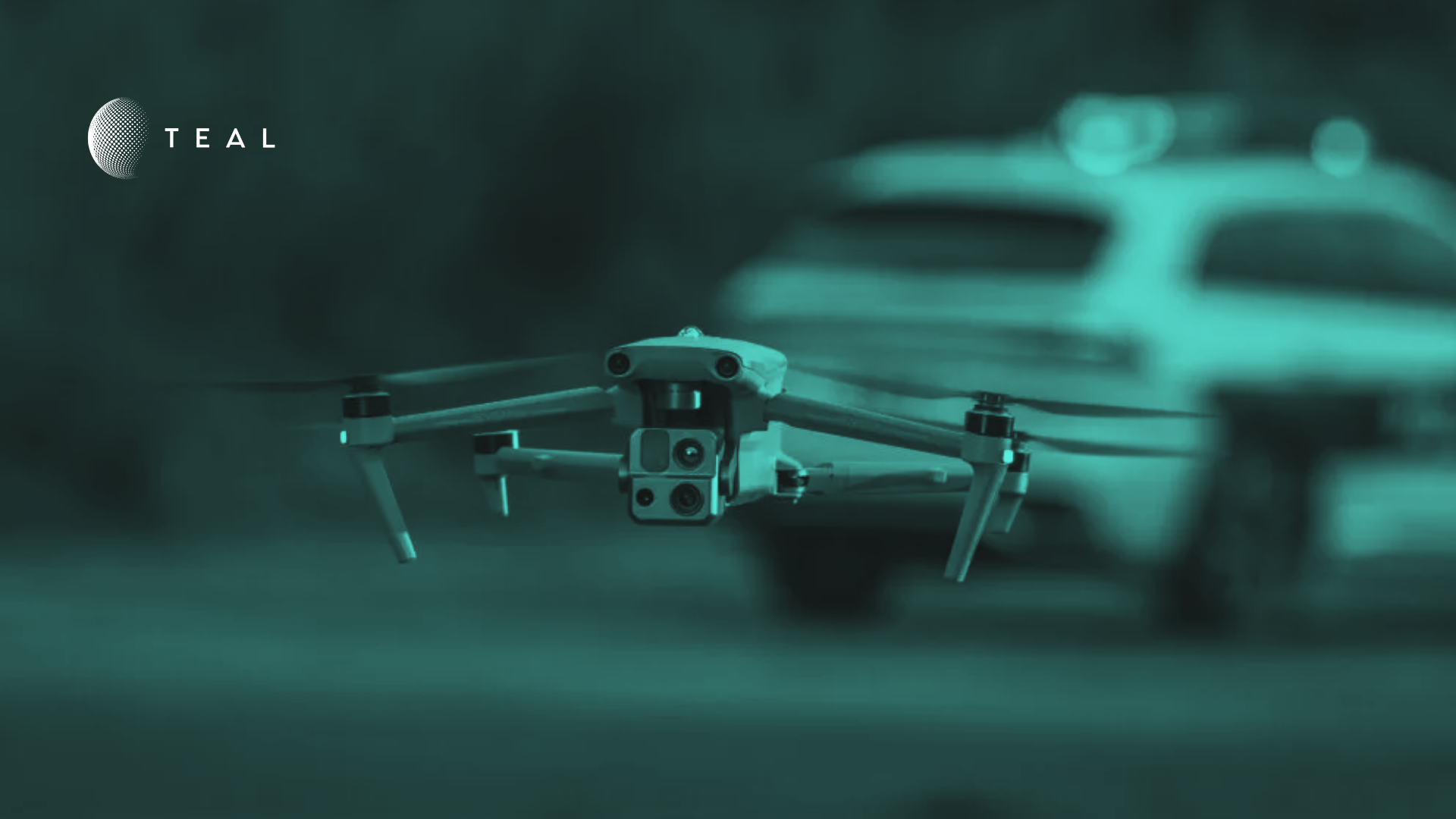BVLOS Drones: Why Traditional Connectivity Falls Short

The arrival of FAA Part 108 signals a new era for commercial drone operations. It sets the stage for Beyond Visual Line of Sight (BVLOS) flights to become routine, unlocking unprecedented scale for industries like logistics, agriculture, and public safety. However, this transition comes with stringent performance-based standards for safety and connectivity.
Successfully navigating this new regulatory landscape means rethinking the very foundation of how your drones communicate. While traditional cellular solutions like Mobile Virtual Network Operators (MVNOs) have been go-to options for many businesses, they simply weren’t built for the high-stakes world of BVLOS operations. These legacy systems present critical limitations in control, security, and reliability that can ground your operations before they even take off.
Let’s explore why these conventional approaches are inadequate and introduce a modern, resilient alternative designed to meet the demands of enterprise drone operations. Understanding these differences is the first step toward ensuring your BVLOS program is not only compliant but also competitive.
The Problem with Traditional Connectivity
For years, businesses have turned to Mobile Virtual Network Operators (MVNOs) for their competitive pricing and service flexibility. But when it comes to mission-critical drone operations, the MVNO model reveals significant shortcomings.
The MVNO Limitation
MVNOs operate by leasing network access from major carriers like AT&T, Verizon, and T-Mobile. This arrangement means they can offer attractive rates, but it also means they lack direct control over the core network infrastructure. This is a critical point of failure for BVLOS drones.
- No Network Control: MVNOs cannot access or modify low-level network parameters. They can’t guarantee Quality of Service (QoS) or prioritize your drone’s data traffic during periods of network congestion. When a split-second command can make the difference between a successful mission and a catastrophic failure, this lack of control is an unacceptable risk. Part 108’s performance requirements demand carrier-grade commitments that MVNOs are simply not in a position to deliver.
- Gaps in Security Architecture: Because MVNOs don’t own the core security infrastructure, implementing robust, end-to-end security protocols is a major challenge. Enforcing SIM-based authentication or encryption policies that align with FAA and NIST cybersecurity standards becomes difficult, if not impossible. Part 108 mandates comprehensive security policies to protect your network and devices, a requirement that MVNOs struggle to support adequately.
- Missing Regulatory Integration: Perhaps the most significant drawback is the lack of regulatory integration. Part 108 requires deep integration with Uncrewed Traffic Management (UTM) systems and traceable ownership of SIM devices. MVNOs, acting as resellers, cannot easily provide this level of integration and traceability, creating a major compliance gap.
Roaming Creates Unacceptable Operational Risks
Standard roaming solutions, often used for operations that cross different network territories, introduce another layer of risk for mission-critical drone flights.
- Latency and Instability: Roaming connections are notorious for higher latency and instability, which can compromise the real-time command and control links essential for BVLOS operations.
- Delayed Failover: Traditional roaming lacks real-time network switching. If a connection is lost, the delay in finding and connecting to a new network can be dangerously long.
- Security Vulnerabilities: Operating on constantly changing, untrusted international networks exposes your operations to significant security risks.
For any organization serious about scaling its BVLOS operations under Part 108, relying on traditional MVNOs or standard roaming is not a viable strategy. These solutions were not designed for the level of reliability and security that uncrewed aviation demands.
A Modern Approach: Carrier-Agnostic Connectivity
The future of compliant and scalable BVLOS operations lies in flexible, carrier-agnostic connectivity platforms. Instead of being locked into a single network or relying on a reseller with no real control, these modern solutions offer dynamic network orchestration across multiple carriers.
TEAL provides a US-built, secure, and carrier-agnostic connectivity platform designed specifically for the challenges of FAA Part 108. Our Network Orchestration Service (NOS) delivers the resilient, redundant, and low-latency connections that BVLOS flights require.
Real-Time Network Switching and Redundancy
A drone flying BVLOS will inevitably cross through areas with varying cellular coverage. A single-carrier solution might lose connection, but a carrier-agnostic platform can adapt instantly.
TEAL’s Network Orchestration Service (NOS) utilizes patented, wholly owned eSIM technology that allows you to dynamically switch between multiple Tier-1 carriers in real time to maintain the strongest possible signal. This isn’t just about having a backup; it’s about intelligent, seamless failover that optimizes coverage on the fly. This capability is crucial for maintaining the redundant command and control links mandated by Part 108. With a single SIM, your drone can hop between networks, eliminating the downtime and risk associated with lost connectivity.
Built for Security and Compliance
Security is not an afterthought; it’s a core component of our platform. Built entirely in the United States and GSMA-certified, TEAL ensures you have full control over your data paths and provisioning.
- SIM-Based Identity: We support secure, SIM-based identity and provisioning that aligns with FAA cybersecurity mandates.
- End-to-End Traceability: Our platform provides full SIM traceability and identity management, a key requirement for Part 108.
- Geofenced Policy Enforcement: You can enforce specific network policies based on geographic location, ensuring compliant operations across different airspaces.
Performance That Meets Part 108 Demands
Our platform delivers the carrier-grade performance necessary for BVLOS operations without the drawbacks of roaming.
- Native Carrier Profiles: We use native Tier-1 carrier profiles for low-latency, high-throughput performance.
- Guaranteed QoS and SLAs: TEAL delivers network-level QoS and Service Level Agreements (SLAs) to meet the stringent latency and reliability needs of BVLOS.
- Intelligent Fallback: Carrier-agnostic connectivity ensures continuous communication, even in challenging environments.
Seamless Integration with the UTM Ecosystem
Part 108 compliance requires seamless communication with FAA-approved systems like Uncrewed Traffic Management (UTM) and Automated Data Service Providers (ADSPs). TEAL’s platform is built with this in mind, providing direct support for UTM integration to facilitate safe and coordinated flights without placing the burden of complex integration projects on your team.
Comparing Your Connectivity Options
When viewed through the lens of FAA Part 108, the strategic advantages of a carrier-agnostic platform become clear.
|
Capability |
MVNO (Reseller) |
MNO (Single Carrier) |
TEAL’s Network Orchestration Service (NOS) |
|---|---|---|---|
|
Network Control |
❌ None |
✅ Full control of their network |
✅ Dynamic control across multiple networks |
|
Quality of Service |
❌ None |
✅ SLA-backed on their network |
✅ Multi-carrier QoS with redundancy |
|
C2 Link Reliability |
⚠️ Variable, uncontrolled |
✅ Prioritized on their network |
✅ Carrier-agnostic with intelligent fallback |
|
Security & Compliance |
❌ Weak, no guarantees |
✅ Controlled environment |
✅ SIM-based identity & secure provisioning |
|
Multi-Carrier Redundancy |
❌ No |
⚠️ Requires multiple SIMs/contracts |
✅ Single SIM, dynamic switching |
|
Airspace Integration (UTM) |
❌ Not integrated |
⚠️ Requires custom partnerships |
✅ Direct support for UTM hooks |
|
FAA Part 108 Alignment |
❌ Inadequate |
✅ Strong, but limited |
✅ Best-fit and resilient |
Prepare Your Operations for Part 108 Success
FAA Part 108 is more than a set of rules; it is the foundation for the future of commercial drone deployment. Organizations planning to operate under this regulation must start preparing their connectivity infrastructure now.
Technical Infrastructure
Begin by evaluating connectivity solutions that offer both cellular and satellite communication links for ultimate command and control robustness. Your systems should be designed with dynamic spectrum capability, allowing for automatic fallback between communication methods based on signal quality. It’s also critical to implement detect-and-avoid (DAA) systems that are tightly integrated with your connectivity infrastructure for real-time alerts.
Operational Framework
Your preparation should also include developing comprehensive operations manuals that outline new roles, such as Flight Operations Supervisor, and establish clear training protocols. Create procedures for transferring control if communication degrades, including automated return-to-home or safe-landing triggers in case of a lost link. Document communication coverage across all planned operational areas and establish a real-time health monitoring system for immediate failure notifications.
The Future is Flexible and Resilient
The era of relying on single-carrier solutions or under-equipped MVNOs for drone operations is over. The performance-based standards of Part 108 demand a more sophisticated approach. The future of BVLOS connectivity lies with flexible, resilient, and intelligent platforms that can adapt to the dynamic nature of uncrewed aviation.
TEAL’s dynamic Network Orchestration Service (NOS) offers a clear path to Part 108 compliance. By providing real-time network switching, end-to-end SIM traceability, and deep integration with the UTM ecosystem, our platform serves as a mission-critical compliance enabler. Organizations that invest in this level of connectivity will not only meet today’s regulations but will also be positioned to lead the industry as it scales.
Don’t let inadequate connectivity ground your ambitions. Schedule a free consultation with a TEAL expert today and discover how our policy-aligned platform can power your BVLOS drone operations. Schedule a free consultation with one of our experts today.
Book a Meeting Now!
Recent Posts
CES 2026: The Connected Future, Through TEAL’s Lens
Teal Communications Staff2025-12-18T18:58:56+00:00
The Fastest Growing Company in the PNW isn’t an AI Startup… it’s TEAL
Teal Communications Staff2025-12-10T20:43:23+00:00
The Sky is the New Cell Tower: Satellites Are Reshaping the MNO Landscape
Teal Communications Staff2025-12-09T21:28:24+00:00




